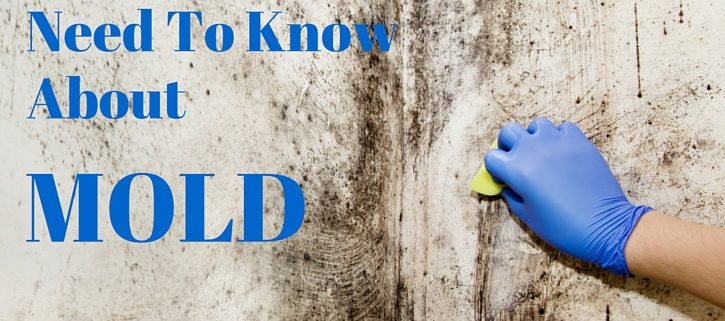What You Need To Know About Mold
What You Need To Know About Mold
In Real Estate, mold is a “four letter word”. Any time it comes up, it strikes fear in the hearts and minds of just about everyone, whether they be a renter or a homeowner. It’s an ambiguous, mysterious marvel that some people care less about and others downright think it will kill them overnight. Needless to say, there is a lot of misinformation about mold; something that could be used against you to cheat you out of thousands, to tens of thousands of dollars if you don’t know your stuff. In this article, I’ll go into a few things anyone who lives and breathes needs to know and understand about mold.
Where Is Mold?
First of all, mold is everywhere. That’s worth repeating. Mold is everywhere. It’s in the air, it’s in your yard, household potted plants, it’s in your flooring, it’s in your bathroom in everything from the sink drain to the toilet reservoir and the bathtub, to the shower curtain, ceiling and walls. It’s heavily widespread throughout your refrigerator, especially if you have leftovers stored in plastic containers for more than a week. It’s definitely in your garbage can, and it’s probably in your pantry. Mold is in and on potatoes, onions, cheese, bread, and can even grow in a leftover glass of Coca-cola it it gets left out for more than three or four days. So before we move on, let’s all collectively agree that mold is… everywhere.
What Is Mold?
Mold is a living organism that grows on just about any organic substance when four conditions come together at the right time. Mold starts out as a “spore”, similar in concept to a seed. Mold spores are in and on just about everything that exists. They are super-tiny and blow in the wind, landing on anything and everything. They get into your home from the air, on your shoes and clothing, and from foods you bring into your house. Mold spores are extremely common and almost impossible to avoid. It’s the spores that cause the health risks, not the actual mold itself, so getting the mold under control before it blooms and releases billions of spores into your home is very important. So let’s look at the whole process.
How does mold grow? Well first you need at least one mold spore. Since mold spores are everywhere, all they need to grow are four other factors: (1) moisture, (2) proper temperature, (3) a food source, and (4) time. Just like a seed, mold cannot grow without the proper factors that allow it to germinate, bloom, and spread. The easiest of the four to control is moisture. The vast majority of molds absolutely can not grow in a dry environment. That means here in southern Louisiana, with our humidly, its very hard to get away from. So, if you have mold, the first step in controlling it is to remove the moisture. That means to completely dry out the surface the mold is growing on. Don’t be surprised, however, that drying everything out won’t make the discoloration go away… but the actual mold organism will die soon after the moisture is removed. Temperature is also an important factor because most household molds grow at room temperature or warmer levels; but as anyone with a refrigerator knows, mold can grow in a cold environment too. The most common household molds do need warmer temperatures to really get traction and spread, so in warmer months, mold will bloom and spread faster than in colder temps. As for the food source, that’s a toughie. Mold likes to eat just about anything organic (natural), including drywall. Drywall is made of gypsum powder pressed into a sheet and lined with… paper. Paper is organic, made from wood, and is one of mold’s favorite foods. The time it takes for mold to grow and spread is dramatically controlled by the quantity of the food source, a constant presence of moisture, and appropriate temperatures. Given the right conditions, mold can bloom and spread in as little as 2 days. If you’ve ever experienced a major flooding event like Hurricane Katrina or heavy floods seen in places like Lakeview New Orleans, St Louis Missouri and Houston Texas, you’d know that mold can completely overtake an entire house in a week.
What To Do About Mold?
The first advice is NOT to panic. Try to locate the source of moisture and control it. If you have a leak, shut the water off and get it fixed. Make a hole in any wet wall and let it dry out from the inside. Drywall repair is actually pretty easy, so don’t be afraid to cut a hole in the wall. Be aware that if you have a plumbing leak inside a wall, there is probably way more moisture inside the wall than there is on the outside. As the water wicks to the outer surface, mold growing on the inside will also spread to the outside.
Next, evaluate the size of the affected area. If your mold is contained to a few square feet, most states permit it to be cleaned and repaired by an unlicensed handyman. Depending other state laws, mold exceeding a certain number of square feet must legally be cleaned by a certified mold remediator. Check your local and state laws before calling in a mold inspector or remediator.
Be Careful
The final warning is to be wary of any mold inspector who also does cleanup. This doesn’t mean to not hire them, just exercise caution. Mold remediation is largely unregulated, meaning that just about anyone can take a week long online course and call themselves a mold inspector and/or remediator. This lack of regulation makes the mold profession extremely competitive and opens the door for some (not all, but definitely some) mold inspectors to use inappropriate business practices to get the job, such as falsely identifying a non-harmful mold as “toxic black mold” and telling you it’ll kill you if you don’t pay thousands of dollars to let them clean it up. I’ve personally seen instances where a mushroom grew in someone’s bathroom and an unscrupulous mold inspector told them it was toxic black mold and would cost five thousand dollars to clean up. When I looked at it, I knew it was a harmless mushroom and cleaned it up with a little bleach water (or Tilex) and a vacuum cleaner. My method was far cheaper than the other guy’s.
Lastly, be cautious of any mold inspector who also does remediation (cleanup) work. If your inspector does not perform remediation, there is less incentive to mislead you. In fact, in some states, it’s against the law for a mold inspector to also do cleanup. Check your local laws if you are unsure about this. The internet is a good source of information about mold, how much is too much, what can and cannot be cleaned by a handyman, or what is legally required to be handled by a professional. In any case, be cognizant that mold does have a possibility of causing health problems… not always, but sometimes. Don’t take it lightly, but also, don’t panic and get suckered into spending thousands of dollars to clean up a mushroom.





Leave a Reply
Want to join the discussion?Feel free to contribute!